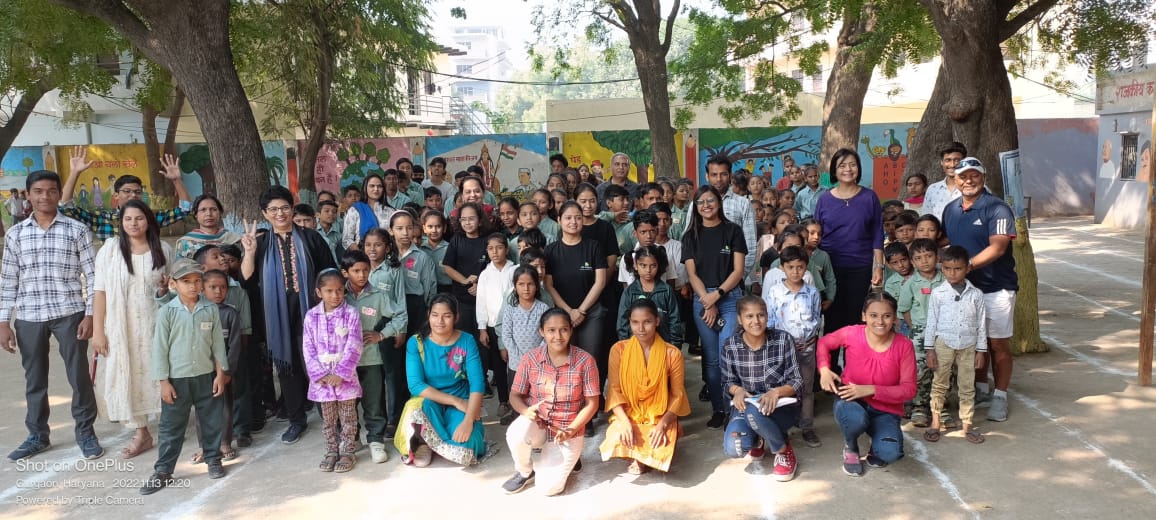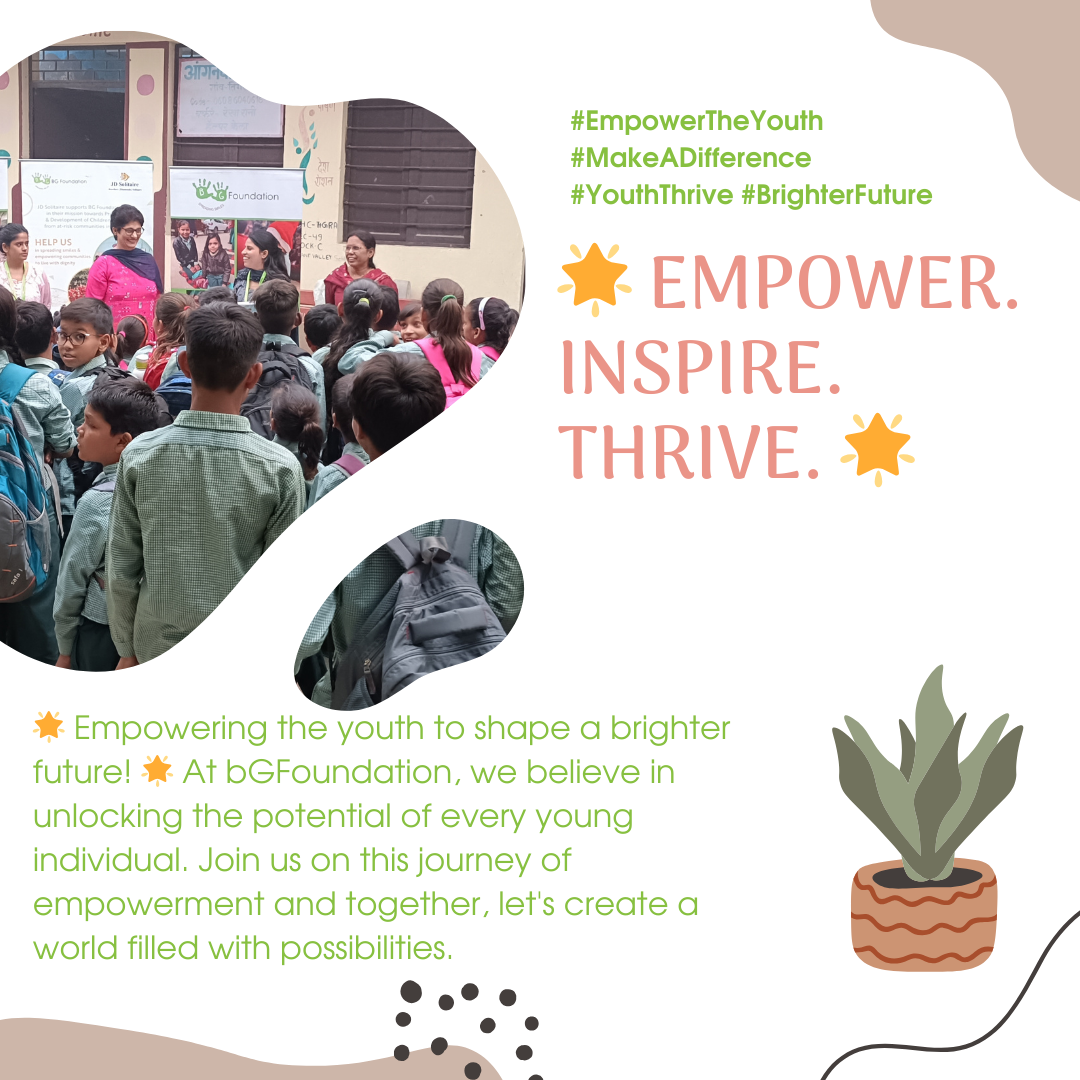Unlocking the Power of Education:
Underprivileged youth refer to children and adolescents who come from disadvantaged backgrounds, often characterized by poverty, limited access to resources, and social inequality. These young individuals face numerous challenges in their lives, including limited opportunities for education. However, education plays a crucial role in breaking the cycle of poverty and empowering underprivileged youth to overcome the obstacles they face.
This blog post aims to highlight the importance of education for underprivileged youth and explore its impact on their lives. It will also discuss the challenges they face in accessing education, innovative approaches to providing education, the role of mentorship and role models, overcoming socioeconomic and cultural barriers, addressing the gender gap in education, the role of technology, and the importance of collaboration and partnership in empowering underprivileged youth.
The Impact of Education on the Lives of Underprivileged Youth
Education has a profound impact on the lives of underprivileged youth. It not only equips them with knowledge and skills but also opens doors to improved health outcomes, increased economic opportunities, enhanced social mobility, and an overall improved quality of life.
Improved health outcomes: Education plays a crucial role in improving health outcomes for underprivileged youth. It provides them with knowledge about hygiene practices, disease prevention, and healthy lifestyles. With education, they are more likely to make informed decisions about their health and seek appropriate healthcare when needed. Studies have shown that educated individuals are more likely to have better health outcomes and live longer lives.
Increased economic opportunities: Education is a powerful tool for economic empowerment. It equips underprivileged youth with the skills and knowledge needed to secure better job opportunities and higher incomes. With education, they can break free from the cycle of poverty and provide a better future for themselves and their families. Additionally, educated individuals are more likely to be financially literate and make informed financial decisions.
Enhanced social mobility: Education is a key driver of social mobility. It provides underprivileged youth with the opportunity to improve their social status and move up the socioeconomic ladder. Education opens doors to higher education, professional careers, and leadership positions, allowing them to have a greater influence on their communities and society as a whole.
Improved quality of life: Education has a transformative effect on the overall quality of life for underprivileged youth. It empowers them to make better choices, have a greater sense of self-worth, and lead fulfilling lives. Education also promotes critical thinking, problem-solving skills, and creativity, enabling them to navigate through life’s challenges and contribute positively to their communities.
The Challenges Faced by Underprivileged Youth in Accessing Education
Despite the importance of education, underprivileged youth face numerous challenges in accessing it. These challenges include lack of financial resources, limited access to quality education, socioeconomic and cultural barriers, and gender inequality.
Lack of financial resources: One of the primary barriers to education for underprivileged youth is the lack of financial resources. Many families living in poverty struggle to afford necessities, let alone educational expenses such as school fees, uniforms, textbooks, and transportation. This financial burden often forces children to drop out of school or never enrol in the first place.
Limited access to quality education: Underprivileged youth often have limited access to quality education due to factors such as inadequate infrastructure, shortage of qualified teachers, and overcrowded classrooms. Schools in disadvantaged areas may lack basic facilities such as libraries, laboratories, and computers, hindering students’ learning opportunities. Additionally, the quality of education may be compromised due to a lack of resources and support.
Socioeconomic and cultural barriers: Socioeconomic and cultural barriers also pose significant challenges for underprivileged youth in accessing education. Discrimination based on socioeconomic status or cultural background can limit their opportunities for education. They may face prejudice or bias from teachers or peers, which can negatively impact their educational experience. Moreover, societal expectations and norms may prioritize other responsibilities over education, such as child labour or early marriage.
Gender inequality: Gender inequality is a significant barrier to education for underprivileged youth, particularly girls. In many societies, girls face discrimination and are often denied access to education due to cultural norms, early marriage, or the expectation to fulfil domestic roles. This gender gap in education perpetuates social inequality and limits the potential of underprivileged girls.
The Role of Education in Breaking the Cycle of Poverty
Education plays a crucial role in breaking the cycle of poverty for underprivileged youth. It serves as a powerful tool for economic empowerment, social mobility, and improved health outcomes.
Education as a tool for economic empowerment: Education equips underprivileged youth with the knowledge and skills needed to secure better job opportunities and higher incomes. It provides them with the foundation to develop marketable skills and pursue careers that offer financial stability. By acquiring education, they can break free from the cycle of poverty and create a better future for themselves and their families.
Education as a means of social mobility: Education is a key driver of social mobility. It provides underprivileged youth with the opportunity to improve their social status and move up the socioeconomic ladder. With education, they can access higher education, professional careers, and leadership positions, enabling them to have a greater influence on their communities and society.
Education as a way to improve health outcomes: Education has a direct impact on health outcomes. It equips underprivileged youth with knowledge about hygiene practices, disease prevention, and healthy lifestyles. With education, they are more likely to make informed decisions about their health and seek appropriate healthcare when needed. Studies have shown that educated individuals are more likely to have better health outcomes and live longer lives.
Innovative Approaches to Providing Education to Underprivileged Youth

To address the challenges faced by underprivileged youth in accessing education, innovative approaches are needed. These approaches aim to provide education in a way that is accessible, affordable, and relevant to their needs. Some of these approaches include community-based education programs, mobile learning solutions, online education platforms, and vocational training programs.
Community-based education programs: Community-based education programs bring education directly to underprivileged communities. These programs often involve partnerships between local organizations, schools, and community members. They provide educational opportunities in areas where formal schools may be lacking or inaccessible. Community-based education programs are tailored to the specific needs of the community and often incorporate practical skills training and vocational education.
Mobile learning solutions: Mobile learning solutions leverage the widespread use of mobile phones to deliver educational content to underprivileged youth. These solutions can include educational apps, text message-based learning platforms, or audiovisual content that can be accessed on mobile devices. Mobile learning allows for flexible and self-paced learning, making education more accessible to underprivileged youth who may not have access to traditional classrooms or resources.
Online education platforms: Online education platforms provide underprivileged youth with access to quality educational resources and courses through the internet. These platforms offer a wide range of subjects and levels of education, allowing students to learn at their own pace and according to their interests. Online education can be particularly beneficial for underprivileged youth who may not have access to quality schools or teachers in their local communities.
Vocational training programs: Vocational training programs focus on equipping underprivileged youth with practical skills that are in demand in the job market. These programs provide hands-on training in various trades such as carpentry, plumbing, electrical work, or computer programming. By offering vocational training, underprivileged youth can acquire skills that enable them to secure employment or start their own businesses, breaking free from the cycle of poverty.
The Importance of Mentorship and Role Models in Education
Mentorship and role models play a crucial role in the education of underprivileged youth. They provide guidance, support, and inspiration, helping young individuals overcome challenges and reach their full potential.
Positive impact of mentorship on academic performance: Research has shown that mentorship has a positive impact on the academic performance of underprivileged youth. Mentors can provide individualized support, help with homework, and offer guidance on study skills and time management. They can also serve as a source of motivation and encouragement, instilling a sense of belief in the abilities of underprivileged youth.
Importance of role models in inspiring underprivileged youth: Role models play a vital role in inspiring underprivileged youth to pursue education and achieve their goals. Seeing someone who has overcome similar challenges and succeeded can be incredibly motivating. Role models can come from various backgrounds, including teachers, community leaders, professionals, or successful individuals who have emerged from similar circumstances. Their stories and achievements serve as a source of inspiration and hope for underprivileged youth.
Mentorship as a means of building social capital: Mentorship not only provides academic support but also helps underprivileged youth build social capital. Mentors can introduce them to networks and opportunities that they may not have access to otherwise. By connecting underprivileged youth with professionals or individuals in their desired fields, mentors can open doors to internships, job shadowing, or other career development opportunities. This social capital can significantly enhance their educational and career prospects.
Overcoming Barriers to Education: Addressing Socioeconomic and Cultural Factors
To ensure that underprivileged youth have equal access to education, it is essential to address the underlying socioeconomic and cultural factors that contribute to educational inequality.
Importance of addressing poverty and inequality: Poverty is one of the main barriers to education for underprivileged youth. To overcome this barrier, it is crucial to address poverty and inequality at both the individual and systemic levels. This includes providing financial assistance for educational expenses, implementing social welfare programs that alleviate poverty, and promoting economic opportunities for underprivileged communities.
Addressing cultural barriers to education: Cultural norms and expectations can also hinder access to education for underprivileged youth. It is important to challenge and change these norms to create an inclusive and supportive educational environment. This can be done through community engagement, awareness campaigns, and promoting the value of education for all members of society.
Importance of community engagement: Community engagement is crucial in addressing the barriers to education faced by underprivileged youth. By involving community members, parents, and local organizations in the education process, it becomes a collective effort. This can include initiatives such as parent-teacher associations, community-led education programs, and partnerships between schools and local organizations. Community engagement ensures that the needs and aspirations of underprivileged youth are taken into account and that education becomes a priority for the entire community.
The Importance of Addressing the Gender Gap in Education
Gender inequality remains a significant barrier to education for underprivileged youth, particularly girls. It is crucial to address this gender gap and empower girls through education.
Gender inequality in education: Gender inequality manifests in various forms, including limited access to education, early marriage, cultural norms that prioritize boys’ education, and discrimination against girls in schools. These barriers prevent girls from accessing quality education and limit their opportunities for personal and economic development.
Importance of empowering girls through education: Educating girls has a transformative effect on individuals, families, communities, and societies as a whole. When girls are educated, they are more likely to delay marriage, have fewer children, and invest in their own education and the education of their children. Educated girls are also more likely to participate in the workforce, contribute to economic development, and have a greater say in decision-making processes.
Positive impact of educating girls on economic development: Educating girls has a direct impact on economic development. Studies have shown that investing in girls’ education leads to higher economic growth rates, increased productivity, and reduced poverty. When girls are educated, they are more likely to secure better job opportunities, earn higher incomes, and contribute to the overall economic well-being of their communities.
The Importance of Collaboration and Partnership in Empowering Underprivileged Youth
Collaboration and partnership between government, non-governmental organizations (NGOs), and the private sector are crucial in empowering underprivileged youth through education. These partnerships can leverage resources, expertise, and networks to create sustainable and impactful initiatives.
Importance of collaboration between government, NGOs, and the private sector: Collaboration between government, NGOs, and the private sector is essential to address the complex challenges faced by underprivileged youth in accessing education. Government policies and funding can create an enabling environment for education, while NGOs and the private sector can contribute resources, expertise, and innovative solutions. By working together, these stakeholders can create comprehensive and sustainable initiatives that have a lasting impact on underprivileged youth.
Partnership as a means of leveraging resources: Partnership allows for the pooling of resources, both financial and non-financial, to maximize their impact. Government funding can be supplemented by private sector investments or philanthropic contributions. NGOs can provide on-the-ground expertise and community engagement, while the private sector can offer technological solutions or vocational training opportunities. By leveraging resources through partnership, underprivileged youth can access a wider range of educational opportunities.
Importance of community engagement: Community engagement is crucial in empowering underprivileged youth through education. By involving community members, parents, and local organizations in the education process, it becomes a collective effort. This can include initiatives such as parent-teacher associations, community-led education programs, and partnerships between schools and local organizations. Community engagement ensures that the needs and aspirations of underprivileged youth are considered, and that education becomes a priority for the entire community.



